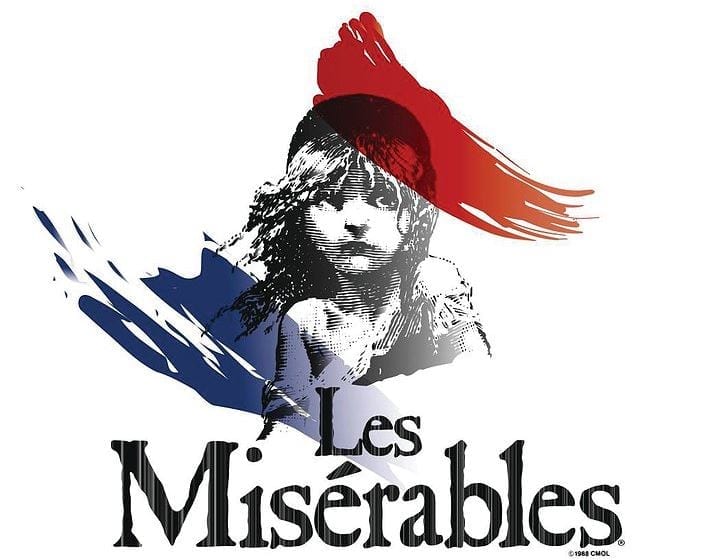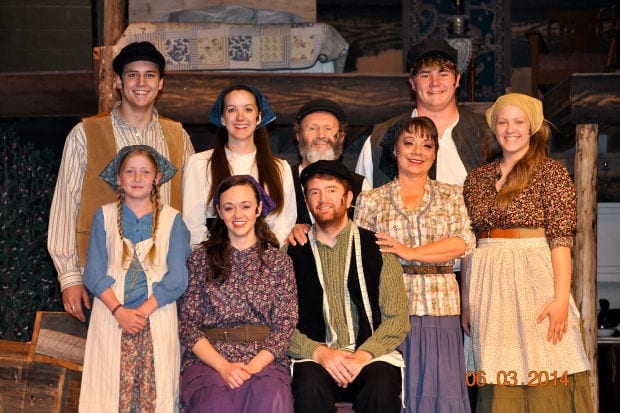OGDEN — I still remember the first time I finally saw Les Misérables on stage. Having listened to the music on my tape player (yes, I am that old) from the time I was in elementary school, it was with great excitement that I walked up the steps to the balcony in the Capitol Theater in Salt Lake City to witness the touring company. Several years later, I was able to see the Broadway production in 1997. Over the years, I have since seen many productions of this amazing and inspired show, and rather than get old and worn out, the timeless tale seems to take on new meaning. I appreciated the thoughts shared by Director of the Ziegfeld production, Rick Rea, in his director’s note in the program. He discussed the vast amount of poverty, slavery, and sadness that still exist in the world today, and how Victor Hugo, author of the novel the play is based on, had stated that as long as poverty is still a part of our world, stories like Les Misérables need to be a part of our world.
As such, I must say that I encourage you to attend this latest production put on by the Ziegfeld theatre. The story follows the life of Jean Valjean, a man who stole a loaf of bread to feed his daughters son, and subsequently faces the life and judgement of an ex-convict. Throughout the story, we see him try to generously help those around him, while harboring his dark secret and hoping that it does not someday destroy him and his beloved daughter that he has adopted and sworn to raise. There are many characters and subplots, and each are as important as another. It is impossible in a limited space to commend all there is to commend or to suggest all there is to suggest. As with any small theatrical group starting out, and especially with the work that the Ziegfeld has done to revitalize a once run down movie house into a live theatrical venue, the biggest downfalls of the show were the fluctuating sound system, which may have contributed to the actors sometimes getting ahead or behind the music. These minor flaws did not detract enough from the show that I would not recommend it.
One note I would like to make regarding the ensemble, though I have seen this show produced more times than I can count, I feel that I understood more clearly the words to the song “At The End of the Day” than ever before. The music, enunciation, and harmonies were crisp, clear, and entertaining. Music director Anne Puzey made some interesting choices, including an a Capella part in the song “Red and Black” that I found enchanting. I was also intrigued and impressed by all the women in the chorus during the harsh reality of the song “Lovely Ladies,” and surprised to feel a stronger level of empathy for each of the women in that predicament, rather than my thoughts being focused on the main character.
Another aspect of the show that I found intriguing was the lighting design, which is uncredited in the program. Les Misérables is an emotionally draining show, and the lighting design of this production was an asset to the movement of the story, altering to signify a change in mood, location, time frame, and even life choices. These were most pronounced during scenes of death, despair, or major plot switches. Make-up design was also well established in this production by Joshua Robinson, especially in regards to the transformation of Fantine from a heathy factory worker to a woman on the edge of death, and Madame Thénardier as she assumes the many different personalities that she exhibited throughout the show.
The main lead actors were all well cast, however there were a few standouts that need mentioning. First would be Mr. Thénardier played by Layne Wilden and Madame Thénardier played by Alina Gatrell. These two were able to bring a charisma to their characters, which are ones that we as an audience love to hate. The humor that they brought and played against each other in “Master of the House” and “Beggars at the Feast” were some of the most enjoyable of the evening. Next I would mention Rachel Shull as a masterful Fantine. Rachel has a strong voice that carried Fantine’s familiar “I Dreamed a Dream” well, but also added to that a depth of emotion that was unprecedented. She continued to build upon that emotion throughout her scenes in the first act, that by the time she returned at the very end of the second act, she seemed to radiate a goodness and light that would have made the original authors pleased to see an actress embody the forgiveness and grace her character is meant to represent. Finally, J. Michael Bailey portrays a masterful Val Jean, a role that he is reprising from his recent production at the Utah Shakespearean Festival. From the difficulty of songs such as “Bring Him Home,” to the powerful moment of truth in “Who Am I?” Bailey embodied everything that the character of Val Jean represents, and it is worth a ticket alone to witness his talent.
At the close of the musical the moral is uttered, “And remember, the truth that once was spoken. To love another person is to see the face of God.” For those who have seen Les Misérables before, I am of the same mind as Victor Hugo in that until there is less injustice in the world, I am not sure one can see a show such as this too much. For those who have not, I encourage you to open your hearts and minds to the message. And finally, I commend the Ziegfeld for tackling large and difficult pieces of art and not condensing or minimizing the difficulty and suffering. As much as I love the large scale productions of Broadway or touring companies, it makes me very happy to see a small community based company take an old run down building and work each show to make it a thing of beauty, family, and connection.







